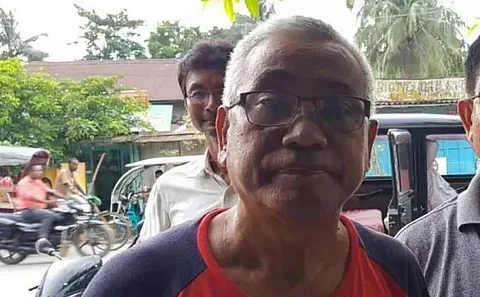
- Home
- Live Blog
- Breaking News
- Top Headlines
- Cities
- NE News
- Sentinel Media
- Sports
- Education
- Jobs

OUR CORRESPONDENT
KOKRAJHAR: Bodoland Janajati Suraksha Mancha (BJSM) on Saturday termed the formation of Kamatapur Autonomous Council for Koch Rajbongshi people as 'constitutionally not valid and unacceptable'.
The president of the BJSM, Janaklal Basumatary said in a statement that there were two kinds of local self-administrations. Tribal area administration under Article 244 (1)(2) of the Constitution. Article 244 (1) tribal area administration power is specified in schedule 5 of the Constitution while Article 244 (2) tribal area administration power is specified in Schedule 6 of the Constitution. Other local self-administration is for non-tribal general area. For village area, the Panchayat under Article 243/243(G), power is specified in 11th Schedule of the Constitution. For urban area, Town Committee, Municipal Board, Municipal Corporation under Article 243P/243W of the Constitution, power is specified in 12th Schedule of the Constitution.
Basumatary said the area proposed for Kamatapur was non-tribal, general area where Panchayat local self-administration existed. The tribal area administration is administered by District Council or Regional Council, The non-tribal general area is administered by Town Committee, Municipal Board or Municipal Corporation. So no autonomous council is applicable in the Kamatapur non-tribal area, he added. He said the people for whom the autonomous council was meant were supposed to be Koch Rajbongshi but there was no such community as Koch Rajbongshi.
"Koch and Rajbongshi are not same ethnic community, Koch is separate, Rajbongshi is separate community. Koch and Rajbongshi are separate communities in Bengal, Meghalaya and even in Assam," he said, adding that in West Bengal they were separately notified as Scheduled Caste by different Sl. No and in Meghalaya, Koch was recognized as ST but Rajbongshis were general caste. He also said that in Assam, originally Koch and Rajbongshi were separately recognized as OBC but the Rajbongshis added Koch appellation with Rajbongshi, denouncing their Khatriya appellation. So the Khatriya Rajbongshis of Bengal origin become Koch Rajbongshi when they started demanding ST status in Assam after knowing that by Khatriya word no ST status could be demanded.
The tribal leader said the Group of Ministers could not distribute ST quota to Koch Rajbongshi which was not an ethnic community. In fact, the State Government could not recommend ST for Koch Rajbongshi which was not a community under Article 342 (1) of the Constitution. The State Government also could not give ST quota for Koch and Rajbongshi separately because both were not notified ST separately. "The Rajbongshis are not Kamatapuris," he said. Historically also there was no reason to consider the earlier Kamatapur as Rajbongshi area. He said that there were no Rajbongshis during Kamatapur rule and so historically also there could not be Kamatapur council for Rajbongshi community.